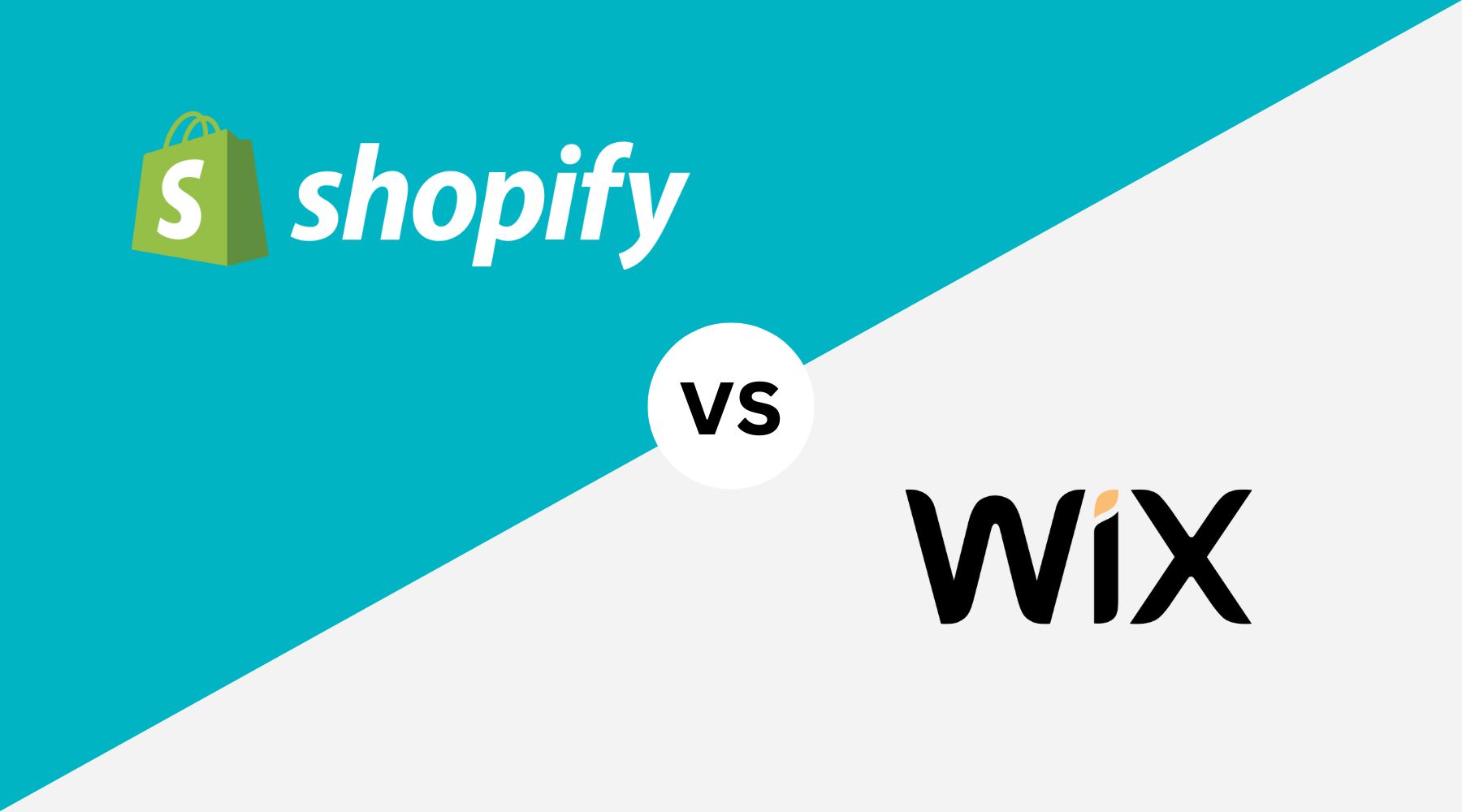Wix vs Shopify: The decision seems simple at first glance. Both platforms let you sell products online. Both offer modern interfaces, plenty of features, and easy-to-use editors. But as soon as you want more than just a functioning shop, your priorities shift.
It’s no longer just about usability it’s about scalability, performance, and technical flexibility. If you want to manage a growing product range, expand into international markets, or integrate custom functionality, you need to look more closely. This is where the difference becomes clear between a website builder with shop features and an e-commerce platform with a dedicated focus.
This article helps you not only recognize the differences between Shopify and Wix, but also understand them. You’ll learn where the limits of both systems lie, which technical advantages Shopify offers, and why switching becomes worthwhile for many businesses sooner or later. I’ll also show you which common mistakes happen when choosing a platform and how a clean migration works.
Shopify vs Wix: What exactly is behind both systems?
Shopify and Wix are among the most well-known solutions for building online businesses. But even though both platforms promise that you can create and run an online shop quickly and easily, they follow fundamentally different concepts.
Wix is primarily a website builder. The platform targets users who need a simple web presence and want to extend it with sales features if needed. The e-commerce capability is an add-on not the core of the system.
Shopify, on the other hand, is a specialized e-commerce shop system. It was designed from the ground up for online retail and covers all the requirements you need when building and running a professional shop. This includes complex product structures, multichannel sales, automated workflows, and international scalability.
If you run a business model geared toward long-term growth, data-driven marketing, and custom functionality, you need a system built for e-commerce not a website builder with a shop add-on.
Here is a brief comparison of the two Shop systems:
|
Criteria |
Wix |
Shopify |
|
System type |
Website builder with shop function |
Specialized e-commerce platform |
|
Target group |
Beginners, smaller projects |
Scaling brands, professional dealers |
|
Product depth |
Limited variants and categories |
Scalable product structure |
|
App connection |
Approx. 750 apps |
Over 13,000 e-commerce apps |
|
internationalization |
Basic functions, limited control options |
Fully integrated, including currency conversion |
|
Access to code |
Restricted |
Completely possible |
|
Focus on e-commerce |
Addition to the website editor |
Built for online retail |
15 differences between Wix and Shopify
The two platforms don’t just differ in their overall concept they also differ in many details that matter in everyday use. If you want to sell products efficiently, automate processes, or expand into new markets, you need a system that can grow with these requirements.
In the following sections, you’ll see how the two platforms differ in concrete ways. Each point shows you where the strengths and weaknesses become visible and what that means for your shop.

1. Scalability & performance
Shopify was built for professional e-commerce. The platform can handle large product catalogs, high traffic, and complex processes without requiring you to manage hosting or system maintenance. Its global server network is designed for stable performance even as data volume grows.
Wix also uses a cloud-based infrastructure that works well for small to medium needs. However, performance can vary depending on the page layout, number of elements, and the design you choose. As traffic increases or your product catalog grows, the need for technical optimization rises.
2. Number of products & variant logic
Shopify lets you manage unlimited products. Each product can have up to 100 variants based on up to three attributes, such as size, color, or material.
This structure is fixed but can be extended with additional apps or custom code. For most standard setups, this is more than enough.
Wix offers more flexibility in the number of variants per product. Up to 1,000 variants with six attributes are possible useful for shops with highly segmented assortments. In practice, this depth is relevant only for certain industries.
What matters most is how efficiently products can be managed, filtered, and displayed and how well the system adapts to growing catalogs.
3. App ecosystem (13,000 vs 750+)
Shopify offers a comprehensive app ecosystem with more than 13,000 extensions. These apps cover nearly every area of e-commerce, from logistics to marketing to custom checkout solutions.
Many of them are designed for scaling and integrate seamlessly into existing workflows. Installation is done directly through the Shopify App Store and usually works without technical knowledge.
Wix provides around 750 apps. The focus is more on general website features, and many functions are built in natively. This can be enough for shops with simple requirements.
But once you need custom processes, external tools, or specialized features, the size and depth of the ecosystem become crucial. This is where the differences between both systems are most noticeable.
4. Design freedom vs. converting themes
Wix offers a wide range of designs with a high degree of creative freedom. You can position elements precisely and adjust layouts however you like. This appeals to users who want full visual control and value individual design. However, this flexibility also brings responsibility for structure, readability, and mobile optimization.
Shopify uses predefined theme structures built for sales and usability. Every theme is responsive, fast, and optimized for e-commerce. Customizations take place within defined sections but can be extended with coding. If you prioritize consistent user guidance and strong conversion rates, the clear, strategy-driven design framework is an advantage.
5. Checkout customization & conversion optimization
The checkout is one of the most critical stages in the buying process. Shopify provides a dedicated checkout infrastructure focused on speed, security, and user experience. In standard plans, design adjustments are limited.
For deeper customization, such as additional fields or dynamic flows, you need Shopify Plus. This version gives you full control over the checkout and allows tailored optimizations throughout the customer journey.
Wix offers more freedom in layout customization, including additional fields or optional information. However, this manual flexibility requires more effort if you want to optimize the checkout for different target groups. The differences become noticeable especially with higher cart values and more complex customer requirements.
6. Social media integration (TikTok, Pinterest, etc.)
Social media is one of the most important sales channels in e-commerce. Shopify provides a wide range of direct integrations for platforms like Instagram, Facebook, TikTok, Pinterest, and Snapchat.
You can sync products, run ads, and manage the entire sales process directly from your Shopify backend. Integration is handled through verified apps and interfaces that are continuously updated.
Wix supports common channels like Facebook and Instagram, sometimes through third-party apps. For additional platforms, manual workarounds or external tools are often required.
If social media is a key part of your sales strategy, you should carefully check how smoothly the integration works and how reliably content can be synced.

7. POS & Multichannel (worldwide vs North America)
Shopify offers a fully integrated POS system that connects online and offline sales. The POS solution is available worldwide and works for physical stores, pop-up shops, or events.
Orders, inventory, and customer data can be managed centrally. Shopify also enables integrations with marketplaces like Amazon, eBay, and Google Shopping.
Wix also provides a POS solution, but it is currently fully supported only in North America. For international use, you need separate tools that don’t always integrate smoothly.
There are also differences in multichannel capabilities. Depending on your region and target market, you should check how flexibly and automatically sales channels can be connected.
8. Mobile optimization & responsiveness
Shopify ensures that all themes are automatically optimized for mobile devices. Layout, navigation, and loading speed adapt dynamically. This directly impacts user experience and conversion. You can also customize mobile sections or tailor content for specific devices.
Wix also offers responsive designs, but mobile performance depends more on the chosen template and the changes you make. With completely free placement of elements, content may not display optimally on mobile.
If you rely on consistent presentation across all devices, responsive behavior and testing become essential.
9. Internationalization & multi-language support
Shopify supports multilingual content natively and allows you to manage products, pages, and URLs per language. Currency conversion, country-specific tax rates, and checkout languages can be handled directly in the system. These features make it easier to enter new markets and offer localized experiences.
Wix also allows multilingual websites, but setup is manual through duplicated content. This requires more maintenance and makes managing larger amounts of content more difficult.
For international shops with multiple regions, loading speed also matters. Shopify uses a global CDN, while Wix handles delivery more centrally.
10. Transaction fees & payment providers
Shopify supports more than 100 payment providers worldwide, including local options like Klarna or Sofort. With Shopify Payments, you avoid extra fees for third-party providers. Transaction fees vary depending on the plan and decrease at higher volumes, allowing you to match your cost structure to your shop’s size.
Wix also supports common payment methods like PayPal, Stripe, and credit cards, but the selection is more limited by region. Flat transaction fees apply regardless of the plan. If you sell across different markets or need alternative payment options, check which providers are supported and how flexible the payment setup is.
11. Code access vs. no-code limitations
Shopify gives you direct access to HTML, CSS, and Liquid, its own template language. This provides many opportunities to tailor layouts, features, and processes exactly to your needs. You can work with developers or build custom solutions beyond the standard options.
Wix follows a clear no-code approach. Customization happens through the visual editor, and more complex functions can only be added to a limited extent. There is a development environment called Velo by Wix, but it remains restricted by the system’s logic.
For custom features or external integrations, this can quickly become a bottleneck, especially as complexity grows.
12. SEO features & indexing
Shopify includes many SEO features out of the box, such as clean URL structures, automatic sitemap generation, server-side rendering, and optimized loading times. You can edit meta tags, alt texts, and redirects directly.
For deeper optimization, specialized apps are available for example, for schema markup or structured data.
Wix has significantly improved its SEO tools in recent years. You can edit meta data, set up redirects, and adjust basic settings. The platform also provides AI-based guidance for beginners.
However, some areas are less flexible, such as handling dynamic content or structured data. If your business relies heavily on Google visibility, you should compare the feature depth carefully.

13. AI support & automation
Shopify uses AI tools built specifically for e-commerce. With Shopify Magic, you can generate product descriptions, personalize content, or create marketing texts automatically.
In addition, the Shopify Sidekick assistant supports you with daily shop management. These features are built directly into the system, so you don’t need separate tools.
Wix also offers a wide range of AI features, but the focus is stronger on website design and content creation. The AI website builder can create entire layouts with text suggestions, images, and design components. For more complex automations or sales-oriented workflows, the differences in depth become noticeable.
14. Security & Hosting Infrastructure
Shopify handles all hosting and meets the highest security standards in e-commerce. The platform is PCI-DSS certified, uses SSL encryption by default, and runs a global CDN for fast loading times.
Security updates happen automatically, so you don’t need to maintain anything yourself. The system architecture is built for reliability and high stability under load.
Wix also offers encrypted data traffic and meets common security guidelines. Its infrastructure is based on a multi-cloud system with global availability. This is sufficient for smaller shops. For data-heavy processes, high traffic, or international campaigns, you should check how well hosting, caching, and recovery procedures perform.
15. Blog function & content flexibility
Wix offers a flexible blogging system with a strong focus on visual storytelling. You can design layouts individually, create content with AI, and combine it with marketing features. Categories, tags, and scheduling make content management easy. This is especially attractive for creative industries.
Shopify also includes a built-in blog that works well for brand-related content. You can publish posts, maintain metadata, and link articles to products.
The structure is functional but less customizable than specialized content systems. If your strategy relies heavily on blogging, you should consider how important advanced content flexibility is for your shop.
Wix or Shopify: 3 common mistakes when choosing a system
Choosing a shop system is often done too early and based on the wrong criteria.
These three mistakes appear frequently in practice:
- Choosing Wix too early: Many start with Wix because the entry seems easy. Interface, price, and design freedom look great as long as the shop stays small. Once processes become more complex or growth picks up, it becomes clear that the system is not built for scaling. Switching later requires extra work.
- Overestimating design freedom: A flexible layout is not a guarantee for better conversion. What looks good doesn’t automatically sell better. Shopify’s design system is based on tested structures that focus on clarity and conversion. Focusing too much on visual freedom often means losing sight of technical stability.
- Planning the migration too late: A system change is more than a data transfer. Product structures, customer accounts, SEO setups, and design logic need to be rebuilt. The later you switch, the higher the risk of traffic loss, missing redirects, or technical issues. Choosing a scalable system early saves time and budget in the long run.
When you should choose Shopify
Not every shop needs a complex setup from day one. But if your business model is built for growth, internationalization, and custom functionality, you should clarify your system choice early.
A typical example: You’ve built an appealing Wix shop with a strong focus on design, content, and brand identity. But once you want automated workflows, advanced payment options, or new sales channels, you hit technical limits.
This is where Shopify shows its strength. Switching to a scalable infrastructure gives you stability, faster loading times, and access to an ecosystem designed for growing brands.
For ambitious shops, the Shopify Plus advantages offer even more potential. These include full checkout access, expanded APIs, B2B features, and custom workflows. These options make the difference when you want to streamline processes or scale internationally.
With custom-developed functions, you can further differentiate your shop. You can integrate advanced product configurators, create personalized customer experiences, or connect internal systems. Shopify lets you build these features directly into your shop without relying on external solutions.

Migrating from Wix to Shopify: 5 steps you need to follow
Switching systems doesn’t have to be complicated as long as you plan it properly.
These five steps form the foundation for a smooth migration:
- Inventory and data export: Product data, customer information, and SEO structures must be fully captured and exported.
- Setting up your Shopify system: Structure, taxonomy, and content are configured so they fit your new setup both technically and strategically.
- Connecting relevant tools: Shipping, payment providers, and external systems are integrated via the appropriate interfaces or apps.
- Testing and validation: Before going live, you test the new shop for functionality, loading times, and redirects. No detail should be lost.
- Go-live and post-launch support: After the move, monitoring is essential. Redirects, SEO structures, and tracking need to run correctly.
As an experienced Shopify agency, Datora handles these processes for you. You receive a setup tailored exactly to your business model. Through our Shopify Plus consulting, we show you which adjustments make sense for your use case and implement them directly.
As an e-commerce agency, we think not only technically but strategically, ensuring your shop doesn’t just function, but grows.
Conclusion: Who should choose what?
The choice between Wix and Shopify doesn’t depend on how your shop looks it depends on your business model. Wix is suitable for simple shops with a small product range, a strong focus on content, and clear design preferences. If you want to start flexibly and don’t need advanced e-commerce features, the platform is sufficient.
Once you want to sell professionally, automate processes, or expand internationally, Wix reaches its technical limits. Shopify is built specifically for e-commerce. It provides the structure, performance, and scalability you need to stay competitive.
Which platform fits which use case?
- Wix: for smaller projects with a content focus, simple products, and custom designs without complex processes
- Shopify: for scaling brands, larger assortments, international needs, and custom functionality
If you want to move to a more powerful e-commerce system or expand your current Shopify setup, you should take a structured approach. Review your setup, define your requirements, and get support where necessary. We help you with technical adjustments, system migrations, and custom feature development.








